Do you understand how various internet platforms make money while you use them every day? Do e-commerce platforms rely on selling products? Do food delivery platforms rely on delivery fees? How about video platforms, social media platforms, and search engines?
Today, I reviewed a speech I gave during internal training at Meituan and the Global Product Manager Summit five years ago and found that most of the principles have not changed. With some new discoveries, thoughts, and examples, I dare to share them with you and look forward to enriching our understanding of this topic through your feedback.
You have probably heard of “platforms”. They need to meet certain characteristics.
Platforms are generally composed of two or more parties and are a place that brings value to participants, with the ultimate goal of facilitating transactions. Platforms generally have network effects – as more participants join the platform, the platform’s value also increases. If you want to understand more about what platforms are, I recommend reading the book “Platform Strategy”. Here, I will briefly describe a typical multilateral e-commerce platform for your reference.
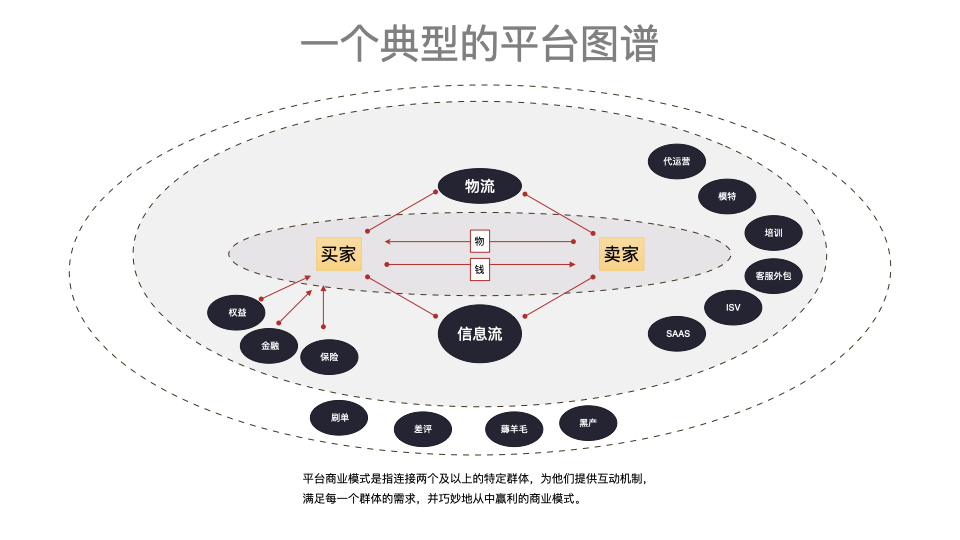
1. Let’s get to know these internet platforms in a different way first
You might say that an internet platform is an e-commerce company, advertising company, food delivery company, or cloud company. However, if we use the structure of their revenue break down and its changing trends as a basis, you will find that the nature of some enterprises may be different from your intuition, and may also be different from what they promote in their PR. I would like to give some examples: Tencent and Alibaba in China; Amazon and Meta overseas.
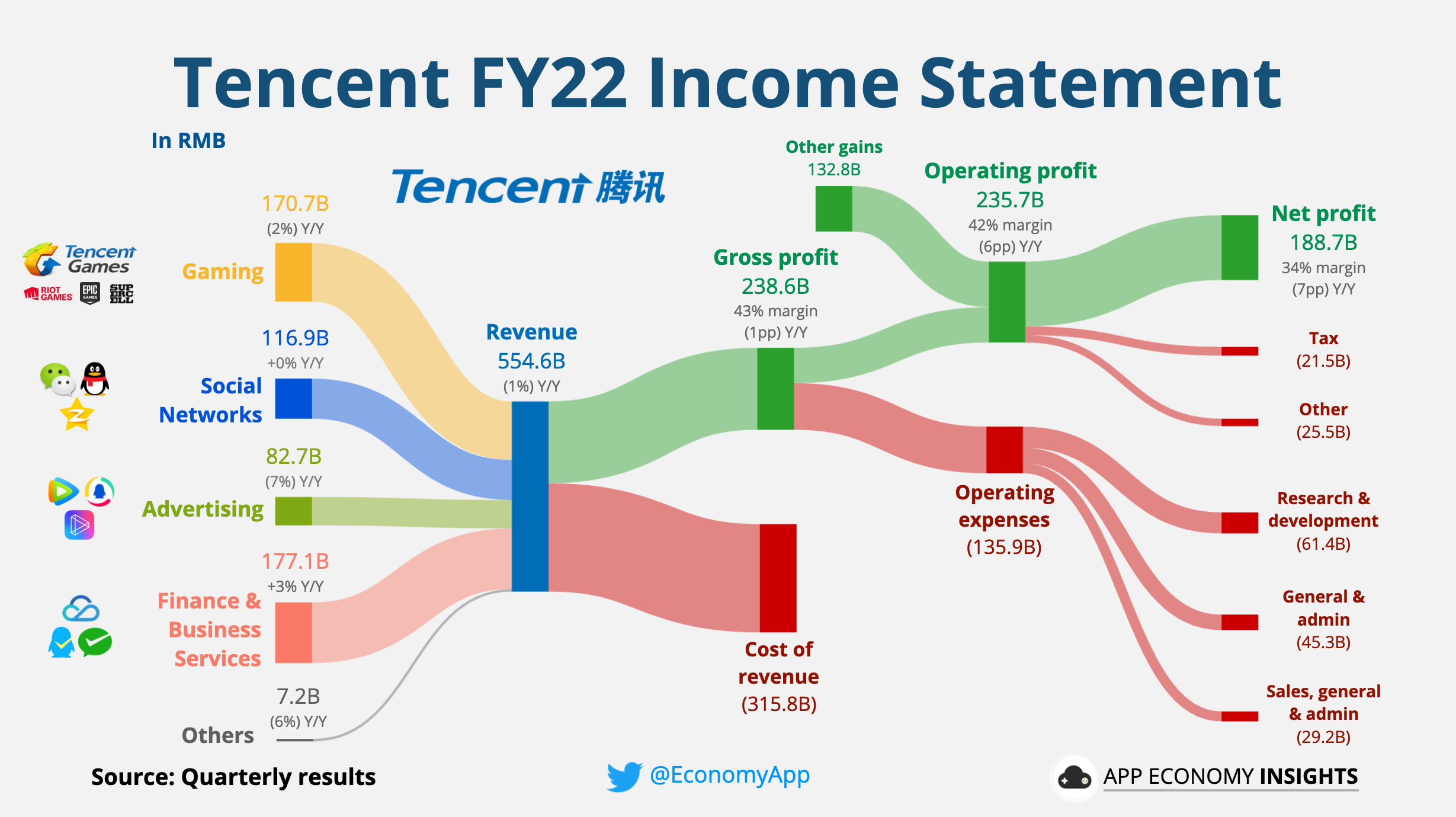
From its revenue, Tencent is a giant with diverse and balanced revenue models. 30% comes from gaming, 30% from cloud and payment services, 20% from social network add-value services that charge users, and 15% from advertising. Its strategy is to use powerful user products like social software to lock in users’ behavior habits and usage time, and each user has a suitable business model for monetization.
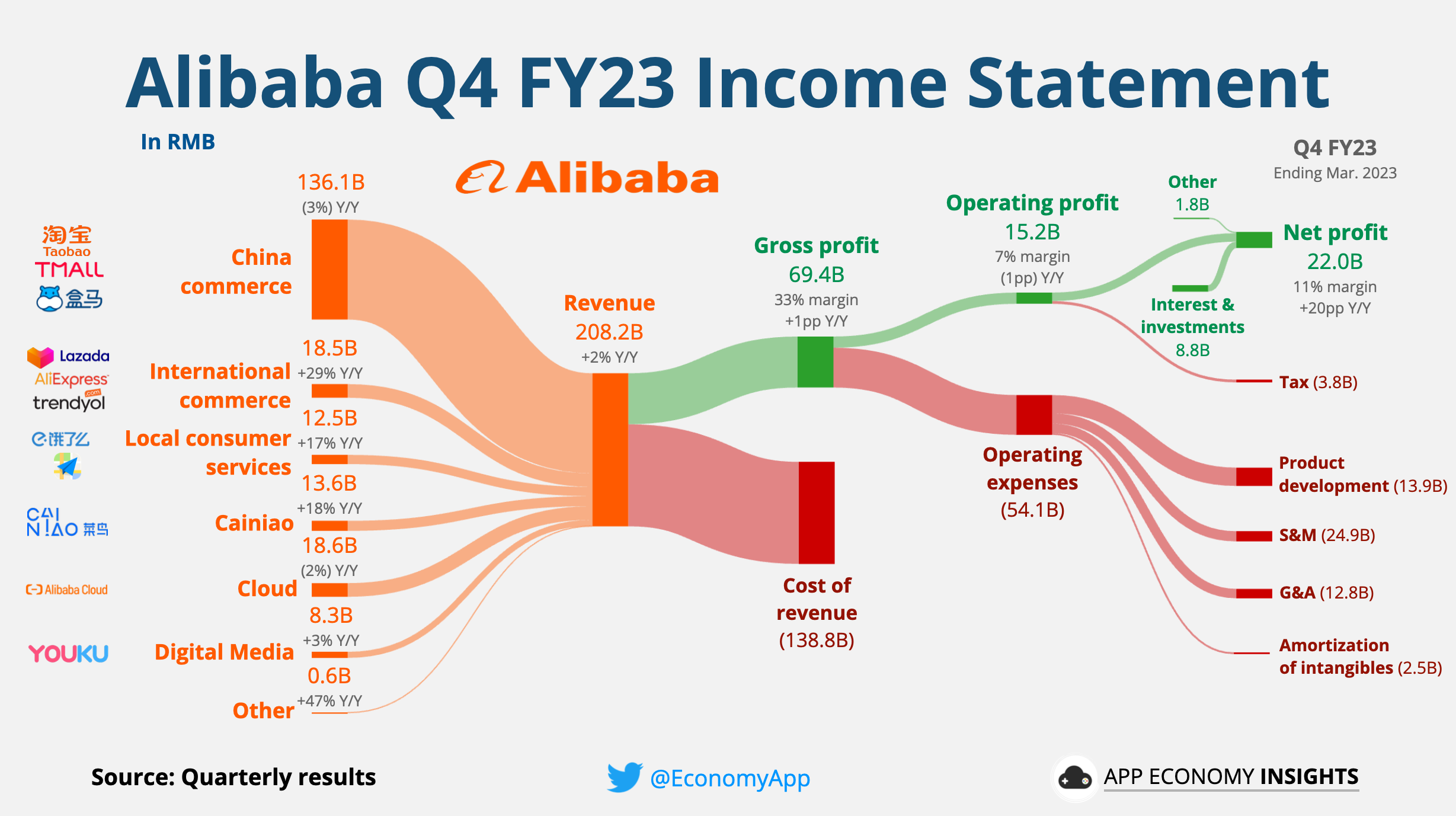
Regardless of revenue or profit, Alibaba’s nature is that of a retail company, with business operations involving both domestic and international logistics and fulfillment. In addition to product retail, they also have local consumer retail, some of which operate on a platform model while others are self-operated. In reality, the main method of achieving revenue is through advertising, with a small portion of the company focusing on cloud computing and entertainment. From the perspective of growth rate, it is also a retail company.
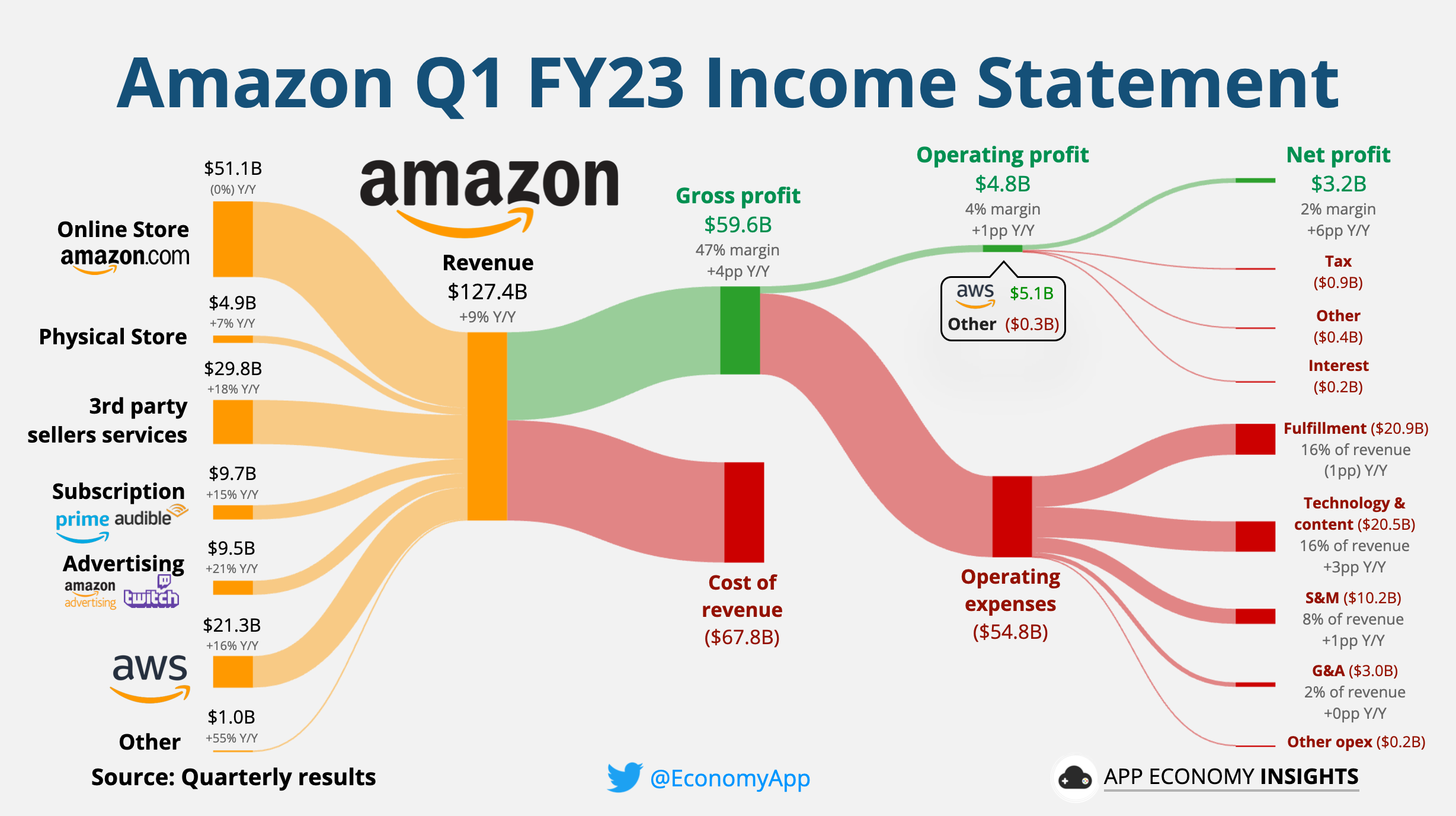
From a revenue perspective, more than half of Amazon’s business is retail, including both online and offline stores, buyer membership services (Amazon Prime), seller services, and advertising. One-sixth of the business is a cloud computing company. In terms of structured growth, Amazon is increasing its focus on being a cloud computing and advertising company. In terms of profit, it is essentially a cloud computing company. Although their business layouts are similar, there are significant differences between Alibaba and Amazon.
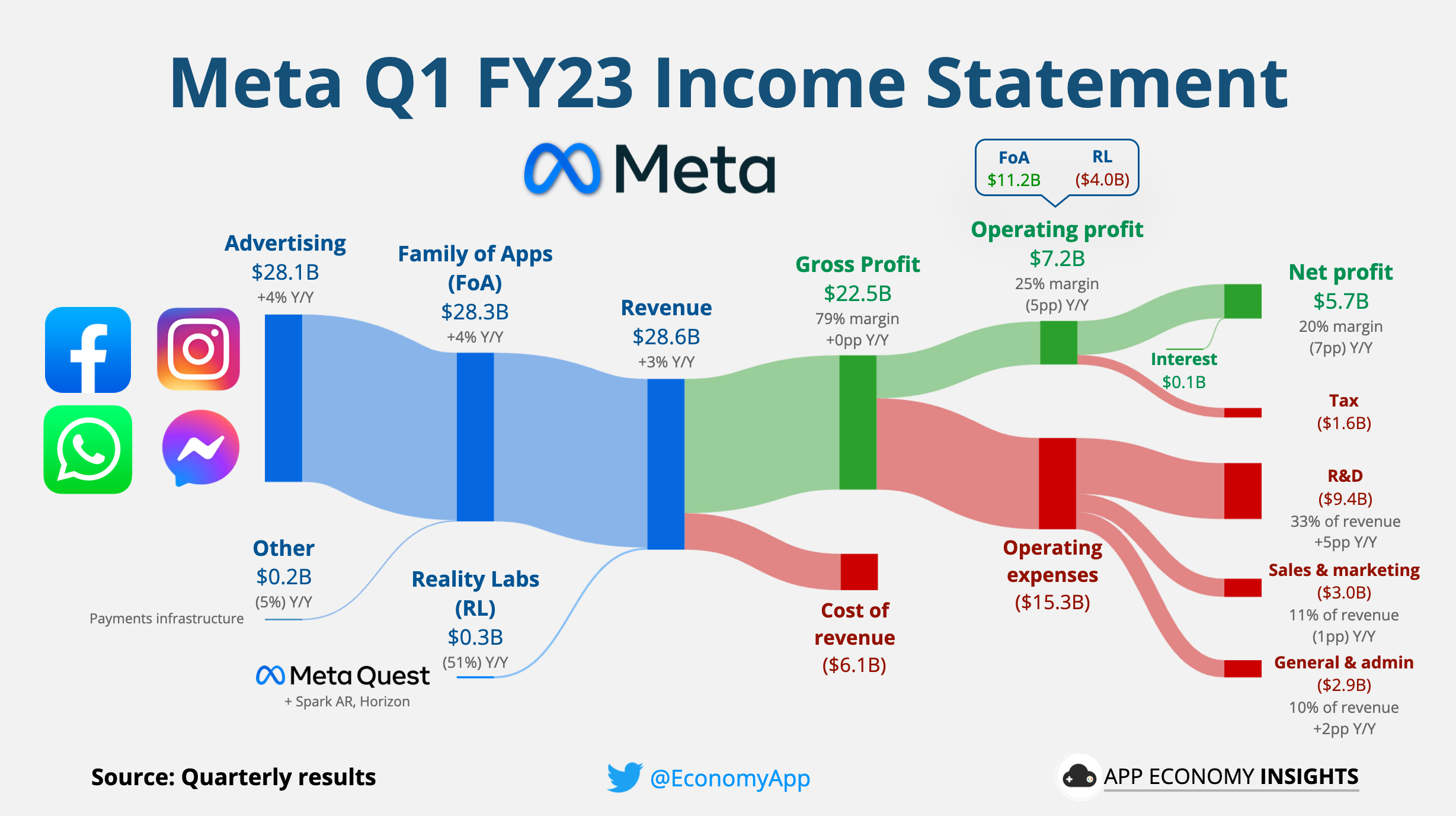
From a revenue perspective, Meta is an undisputed advertising company, and its nature is so strong that no substantial change has been seen in its Metaverse business.
When looking at a company, you may often passively read PR releases and accept the information they want to convey. Alternatively, you can actively break down the business and decompose the seemingly “high-end” segments into commercial models, and reasonably analyze the growth potential and future trends of each segment. Of course, whether the data is reasonably, transparently, and accurately decomposed is also something we need to pay attention to.
2. Business models of platforms
The above examples illustrate some of the business models of internet platforms.
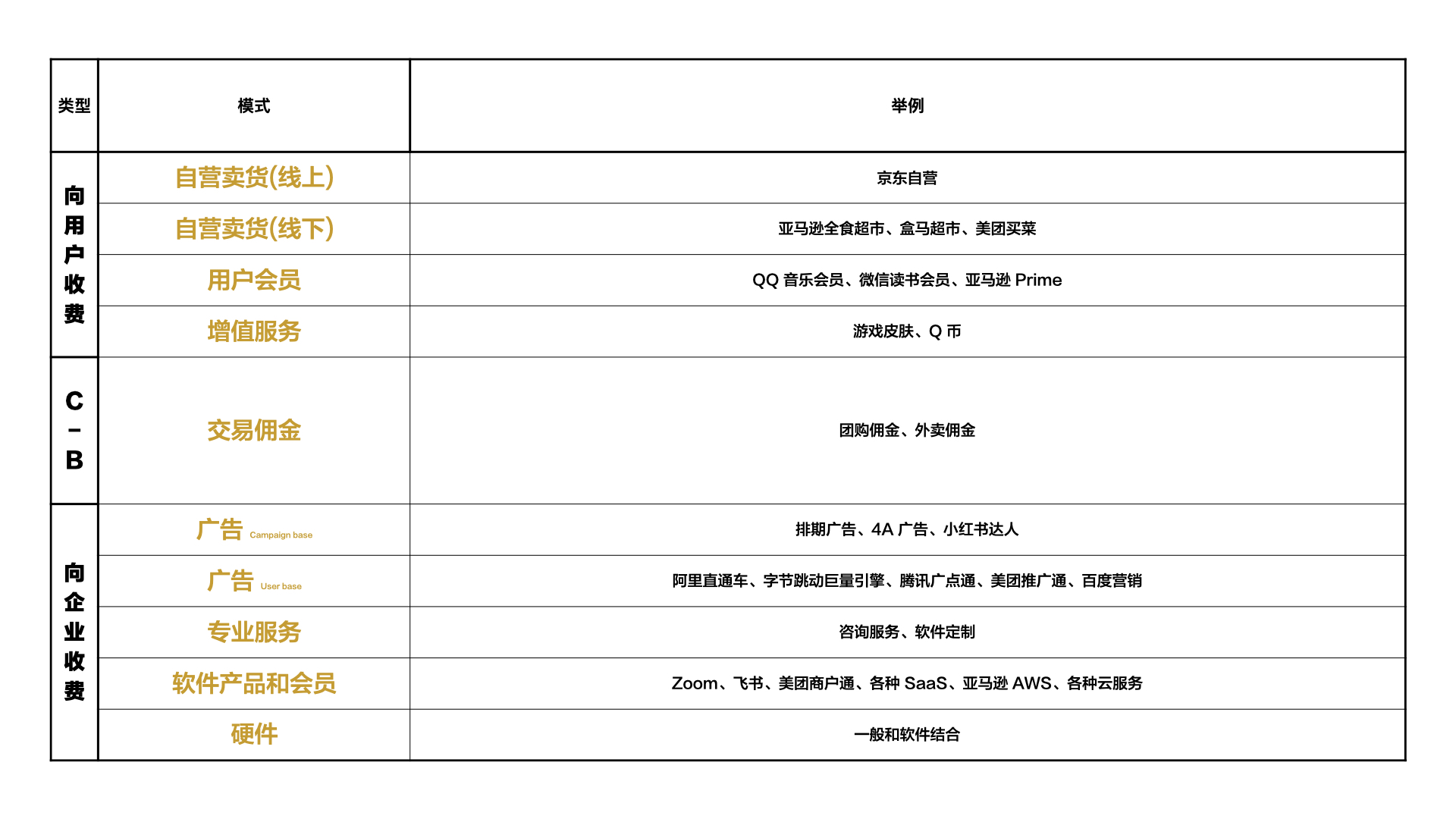
These can be broadly categorized into three types: charging users, charging companies, and taking a commission from transactions between users and companies.
Charging users can be done in various ways, such as selling goods, memberships, or value-added services.
Charging companies can include selling advertisements, specialized services, software, or hardware.
Internet companies always start by building a platform and trying to expand its scale. They then build a combination of these business models based on the participants in the platform.
Business models can be successful if the platform provides sustained value to both parties or multiple parties. Based on this value, a series of charging methods are designed to make payment sustainable by convincing paying parties of the value.
Models may have synergies or be independent of each other. Internet companies generally use BG to distinguish between different business departments, and these departments often have different business models. Alibaba has been more aggressive lately, adopting a 1-6-N model, with 1 as a holding company and 6 representing almost different business models. From governance to incentives and other aspects, they hope to better organize these diverse and complex businesses and business models.
3. Using advertisements to achieve commercialization
One of the most common methods for these platforms to achieve commercialization is through advertising. Why?
Because advertising is a rigid demand in modern commercial society. The economy is composed of transactions, and advertising can stimulate human desires and promote transactions. It always has a certain proportion with the scale of GDP.
Internet platforms themselves also have media properties, and many giants have built strong fulfillment capabilities in addition to their media properties, which further release the link between advertising and transactions, making it an excellent carrier for advertising.
There are two forms of advertising commercialization: one is campaign-based advertising aimed at large customers, and the other is user-based advertising that can be easily launched to acquire more customers with low thresholds.

One important consideration here is whether the platform should choose to patiently and skillfully build a simple and low-threshold advertising product to attract more businesses, or create a dazzling array of non-standard products scale through manpower and services that can only serve some large brand clients. Taking the enterprises I am familiar with as an example, ByteDance, Baidu, and Meituan have tens of thousands to millions of annual active advertisers, while Google and Facebook have several millions of them.
Their differences can be summarized using this table:

Commercial design either focuses on a large customer base with low per-customer pricing, or a small customer base with high per-customer pricing that requires significant efforts to maintain customer relations. If possible, it is preferable to choose the former approach.
This thinking also applies to the commercialization models of other industries. I recently read a book by Yu Minhong called “I’ve Walked on the Edge of Collapse”, and one of the chapters is called “Why Limit the Proportion of New Oriental’s One-on-One Business”. By analogy, large class courses in the education and training field are user base commercial products, while one-on-one courses are campaign base commercial products. The last sentence of this chapter reads: “If I were to summarize the one-on-one business, it’s not that you can do whatever business that makes money. You must consider what impact its business model will have on the enterprise and customers, as well as whether the business model is sustainable, under the premise of revenue. Only by thinking through these aspects can our business model achieve sustainable development.” If you are interested, you can read it in detail to learn more.

Furthermore, different choices have different requirements for the foundation and top-level construction.
4. Make good foundational construction for advertising
What is foundational construction?
Foundational construction is like the foundation of a building. Where it is placed, how well it is built, how deep it is, and how stable it is all determine how high the commercial building can be built.
How can it be done well?
The prerequisite for platform commercialization is to first build a platform, design a good mechanism, and wait until it matures before starting commercialization.
How to achieve this? There is a classic method summarized by Facebook:
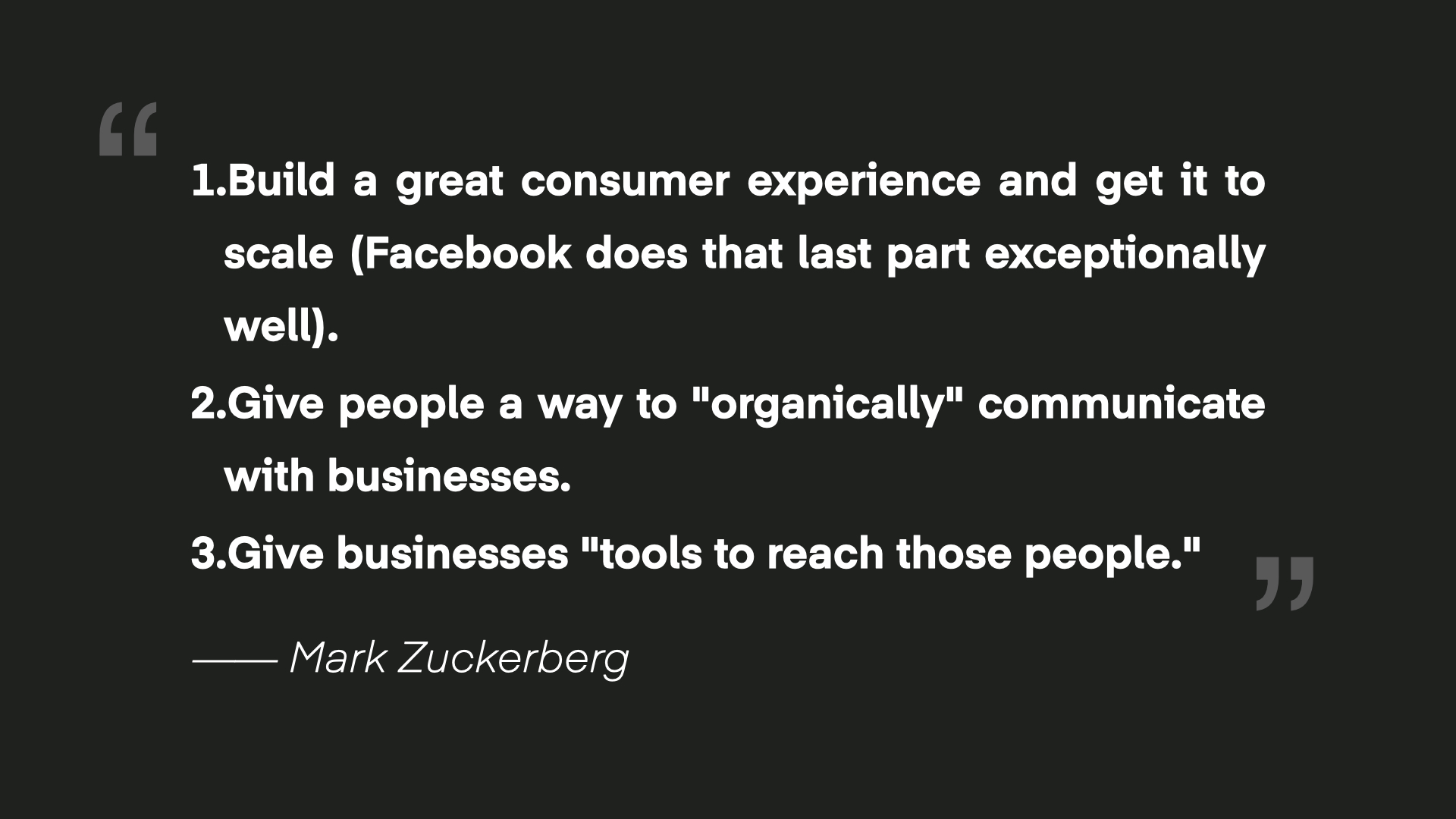
The reason for referencing this method is that it is not only applicable to Facebook, but also has strong universality. Platforms that perform well in advertising all follow such a pattern, from Instagram, YouTube to TikTok, Baidu, Kuaishou, Taobao, Xiaohongshu and even today’s WeChat Moments ads. The advertising form established under this pattern is unobtrusive. Users and businesses are almost identical in their settlement form, and tools are provided to allow businesses and users to interact “organically” day by day with free of charge, then provide paid-tools to help them reach more prospects.
Next, we need to consider a triangle: strong value proposition, low marginal cost, and platform rule escort.

There are three main factors to consider when building a successful advertising product platform:
First, provide a clear value proposition that emphasizes the product’s ability to deliver measurable results for clients. A strong value proposition should be quantifiable, regularly monitored, and reflected in the platform’s performance.
Second, focus on creating a low operating cost for the platform. A strong foundation can reduce the marginal cost of commercial products to a minimum. A good standard to evaluate is whether a client can launch an ad within one minute. The best advertising product companies can simply use the content they already produce and pay to reach a wider audience, without the need to create new advertising materials or landing pages.
Third, ensure that the platform has clear rules to support strong value propositions and low operating costs. The platform must have a clear attitude towards commercialization and establish “definite” rules that are friendly to commercial growth. Most companies divide their product teams into C-end products and B-end products, but without proper rules, the commercialization process can become chaotic.
Xiaohongshu (RED) is a good example. Its advertising content is seamlessly integrated into user-generated content feed, and its advertising landing pages are not owned by the advertisers themselves but rather are articles written by KOLs who endorse the products. To go further, RED should consider whether it needs to allow smaller brands to advertise at a lower threshold and how to scale up the process of matching influencers and brands.
Some platforms may choose not to use certain types of ads, such as preroll video ads, for fear of harming user experience. Instead, they may opt for game-based or campaign-based ads for commercialization, which affects the foundation construction. This may be due to a lack of early foresight that user-generated videos and ads can coexist organically.
Finally, an open mindset is needed to consolidate and improve the platform’s capabilities through open platforms and developer ecosystems.
All of the above factors are essential to build and scale the platform’s commercialization. It is more important to plan early and lay a solid foundation before building the high-rise. Any sudden changes in the middle of the process can be difficult to insert at that mid-way.
5. Building a top-level construction for advertising
What is a top-level construction?
A top-level construction refers to how you position your commercialization system and how you implement that position in the way you present yourself to the outside world on a daily basis.
It determines the potential for commercialization, the platform’s conversion rate for clients, and the cost of salespeople persuading clients.
Campaign-based advertising platforms typically use metaphysical top-level construction logic, while user-based advertising platforms generally use scientific logic. What is the difference?
Metaphysical top-level construction logic is always filled with vague concepts, and quotes and includes the latest trendy terms like AIGC, big data, artificial intelligence, AR, and consumption upgrading. They often hold conferences and attend conferences, but generally cannot provide convincing and quantifiable insights and trends, unless they are operated by top consulting firms or have already established customer relationships, their persuasive abilities are typically very limited.
Scientific top-level construction logic often uses quantifiable insights and trends to attract companies to use their products and uses quantifiable results to respect every penny spent by merchants. They propose many marketing concepts that can be self-explanatory. They are not keen on holding conferences because platforms that make money without making a fuss do not need to be in the spotlight.
Let me imitate metaphysical top-level framework writing a press release:
“Through my platform, you can use cutting edge high-tech such as big data, artificial intelligence, and AR to analyze user behavioral data, restore the original user profile, and achieve precise delivery for thousands of people. We have seized the three keys of intelligence, precision, and personalization and made AI a driving force to promote core capabilities such as creative content generation, cross-scenario user understanding, and precise decision-making to achieve the integration of brand and effectiveness, making advertising more targeted and effective.”
At first glance, it seems to say a lot, but after understanding it, it says nothing. Because apart from cobbling together trendy vocabulary, it has no logic and value.
Let me imitate scientific top-level framework writing a press release:
“Our platform already has a large and active user base, and we welcome your business to join our platform. We continuously update the platform’s trends and insights into users and provide a user insight tool (with a link) to help you find users related to your brand. Users can follow you, and you can communicate with them on a daily basis without paying. In addition, we also provide paid marketing tools with x marketing goals, allowing you to continue to communicate deeply with these users while discovering more new users. These commercial products will bring quantifiable results to your business.”
The following is my observation of the top-level construction techniques of various commercial platforms over the years. How do you choose the parts that are suitable for you from these top-level tools? I believe that after the above content, you should already have some feelings. In the metaphysics and science, I hope you can find a balance between them.

6. Summary
There are different commercial models on the platform, such as charging users, charging enterprises, or take transaction commissions when users pay enterprises.
You need to plan these models well, distinguish which ones bring revenue, which ones bring profit, which ones have high gross profit, which ones have low gross profit, which ones have timely payments, which ones have longer payment periods, which revenues can provide valuation services. And what are the synergies between businesses.
The scalable potential of commercial products comes from foundation construction. Foundation construction needs to be scientific. There are already many excellent design that can be copied. It needs to be established as soon as possible. Commercialization needs to start at the right time, and the first step is to fatten the platform.
Top-level construction should match foundation construction, with practicality as the main focus and virtuality as the supplement.
7. Postscript
I am honored to have the opportunity to share my previous offline speech with you online.
I have observed a phenomenon that many commercialization teams, although backed by very excellent platforms, for some reason, directly skip the foundation construction. They choose to serve large customers that are easier to access, adopt high delivery cost Campaign-based business models, wear gorgeous clothes, make stunning PPTs, and make some hard-earned money that looks large but is not cost-effective after considering the cost.
These models are also commercialization, but for the potential contained in the platform itself, they may miss greater opportunities.


